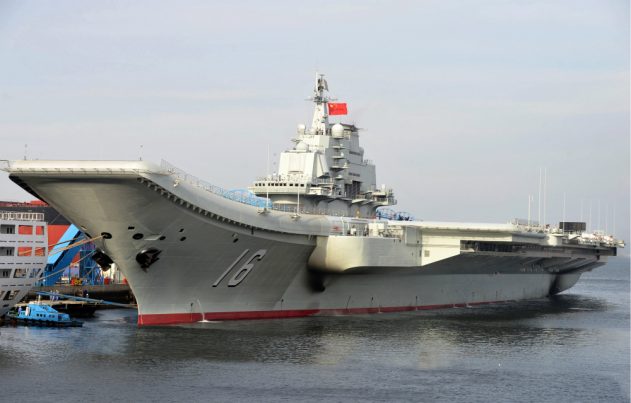
China’s carriers will turn South China Sea into a ‘Chinese lake’ by 2030: Study
Wednesday, January 27, 2016 by usafeaturesmedia
http://www.nationalsecurity.news/2016-01-27-chinas-carriers-will-turn-south-china-sea-into-a-chinese-lake-by-2030-study

(NationalSecurity.news Beijing will build enough aircraft carriers to transform the South China Sea into a virtual “Chinese lake” by the year 2030, a new security study is warning.
As reported by the Washington Post, the study by the Center for Strategic and International Studies also noted that the balance of power in the Asia-Pacific region was shifting away from the United States, and that President Obama’s strategic “rebalance” to Asia has yet to be clearly defined or resourced sufficiently to deal with rising threats from China and North Korea.
The study said that in order to maintain dominance the U.S. would need to sustain and even expand its military presence in the region, while simultaneously working to enhance allies’ military capabilities in Asia.
CSIS undertook the study after Congress ordered the Pentagon to commission an independent analysis and assessment of U.S. strategy in the Asia-Pacific region, the Post noted.
The paper added:
It concluded that Obama’s rebalance needed more attention and resources, especially as China has accelerated the pace of “coercive activities” and island-building in the South China Sea and the East China Sea, and North Korea has continued to develop its nuclear and ballistic missile capabilities.
“Chinese and North Korean actions are routinely challenging the credibility of U.S. security commitments, and at the current rate of U.S. capability, the balance of military power in the region is shifting against the United States,” the study said.
The study noted further that China is expected to field several aircraft carriers in the South China Sea region by 2030, which will give Beijing a dominant capability over other nations in the area without actually having to be too aggressive.
In December, as NationalSecurity.news reported, China announced it would be building its first domestically produced aircraft carrier, with more planned in the years ahead. China obtained its first carrier, the Liaoning, from the former Soviet Union, which had begun building the ship but ceased construction after the USSR collapsed in the early 1990s.
“For rival claimants in the South China Sea, this is a game changer,” the study said. “There will almost always be a Chinese CSG (carrier strike group) floating in contested waters, or within a half-day’s steaming time.”
The think tank, in its study, identified three primary U.S. goals for the region: Protecting American citizens and allies, promoting trade and economic opportunity, and promoting universal democratic norms. However, analysts expressed concern that the Obama rebalance “may be insufficient to secure those interests.”
Further, the study warned that capping military spending at budget levels contained in the Budget Control Act would “severely constrain implementation of the rebalance.” Analysts called on Congress “to forge a long-term bipartisan agreement to fund defense at the higher levels for which there is broad consensus.”
See also:
Asia Pacific Rebalance 2025: Capabilities, Presence and Allies [PDF]
NationalSecurity.news is part of the USA Features Media network of sites. For advertising opportunities, click here.
Tagged Under: Tags: aircraft carrier, China, South China Sea






